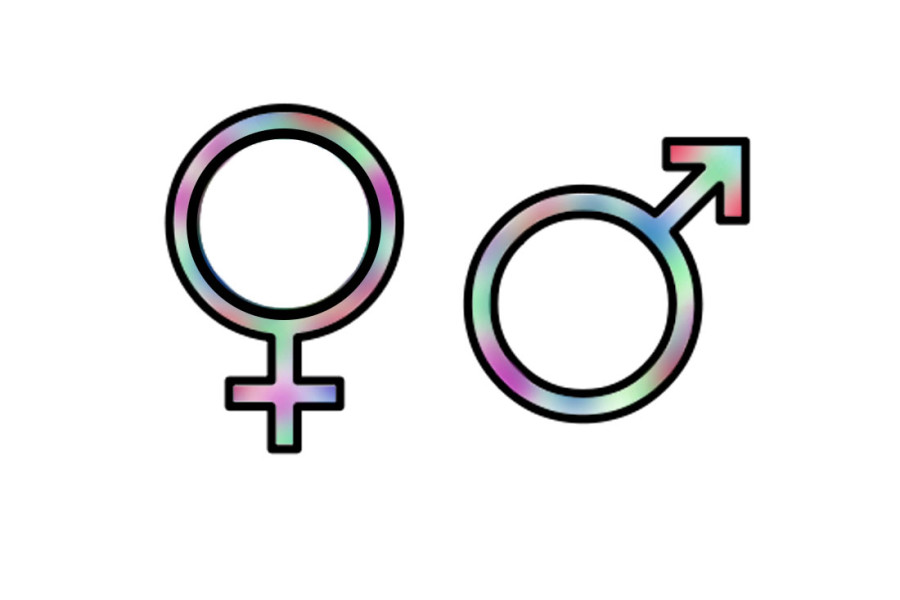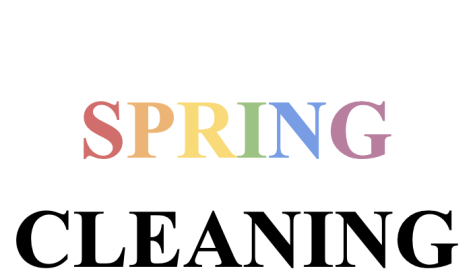Gender Inclusive Language is as Important as Ever
April 24, 2015
In our current society, the traditional line between male and female is becoming progressively thinner. Gender roles are not so concrete as they once were. It is no longer expected of the wife to stay home with the children while the husband goes off to work. Another important fact is that gender fluid, pan-sexual, asexual, and other LGBTQ individuals voices are finally being heard louder than ever before.
This leads to the question of possible changes that need to be made to our educational system. For example, should there only be co-ed teams for school sports? Should gender neutral bathrooms be mandatory in all school facilities? Should a person’s gender continue to be included on standardized tests? One of the challenges faced on a day to day, or even minute to minute basis, is how to address an individual if unsure of their gender.
Gender roles are not so concrete as they once were.
— Morgan Krueger
This type of situation is awkward for both parties involved, but it does not have to be. There are plenty of ways to handle this situation appropriately. One of the main reasons why these circumstances occur is simply because of the lack of education on gender-inclusive language.
Gender-inclusive language is the act of not associating a specific gender to an individual. For example, when trying to refer to someone and not knowing their gender, a person should simply say their name. If the name is not known, use they in the singular sense. Some example sentences would be; “Are they joking?” or “Did they like their present?” Gender-inclusive language also includes PGPs (preferred gender pronouns). PGPs refer to the asking of an individual what pronouns they would rather be referred to with (he/his, they/their, she/her, and many others).
These language tools are not topics that come up in most curriculums and classrooms, and students may feel uncomfortable talking about them because of this. Also, gender-inclusive language is seldom used because not many people realize how big of an impact it can have on another’s life.
Facebook software engineer Brielle Harrison, who recently added many more inclusive customizable options relating to gender, stated that “There’s going to be a lot of people for whom this is going to mean nothing, but for the few it does impact, it means the world.” This statement needs to be kept in mind when brushing off misgendering another individual. It might not seem like a big deal in the moment to you, but to that person, it means so much more than just an awkward situation.
“When I first found out about PGPs, it really resonated with me,” said senior Shirley Urman. “It just didn’t feel right when people would refer to me with only female pronouns. When people start using PGPs, they often feel like they don’t need to hide who they are anymore.”
Urman felt like they were being referred to with a label that didn’t feel right and made them uncomfortable. When someone has a PGP, the best thing to do is to make an effort to remember it. Otherwise, the individual may feel like they are not staying true to who they really are, and are being called something that they are not.
Imagine being a cat, but everyone refers to you as a dog. This might make you want to act more like a dog even though it makes you uncomfortable, just to make it easier for those around you. This does not lead to a very happy and fulfilling life. This example is extremely oversimplified, but it gets the general idea across.
Many people do not take gender-inclusive language seriously because they either have never heard about it or they do not realize how important it is to the individuals it directly affects. One way to avoid this problem is to implement these concepts into the curriculums of normal high school classes, such as health or english.
41% of transgender and gender nonconforming individuals attempt suicide.
“It’d be great if it [gender-inclusive language] was taught to all students outside of clubs after school. It would really normalize things,” said junior Susanna Dodo. If a school only has a club or two after school that teaches students about these topics, it is simply not enough. Even though these clubs create a great community, this community is still limited. These students will still feel secluded from the rest of the school, and not feel validated or acknowledged by the rest of their peers. They may even be made fun of, or worse.
According to a national transgender discrimination survey published in “Injustice at Every Turn,” 41% of transgender and gender nonconforming individuals attempt suicide. In grades K-12, a staggering 78% reported harassment, 35% reported physical assault, 12% reported sexual violence, and 15% dropped out of school because of these severe circumstances. These are just a few demographics for only one sexuality. If we added up all other harassment claims from all non-heterosexual individuals, just think of how staggering those numbers would be. Something obviously needs to change.
School systems can say they are inclusive and that they create a safe environment for their students all they want, but this will be a lie until they acknowledge genders other than male and female, and different sexualities other than straight. Simply educating all students of this topic inside of a curriculum will give validity and hope to these students, and has the possibility to create a safer environment for all. If this is too much to ask, schools should at least make the small but important step to educate students of gender-inclusive language. Schools are getting too touchy on topics like this, but as the LGBTQ demographic grows, all schools will soon be forced to take action. This issue can not be ignored any longer. The lives of students depend on it.













